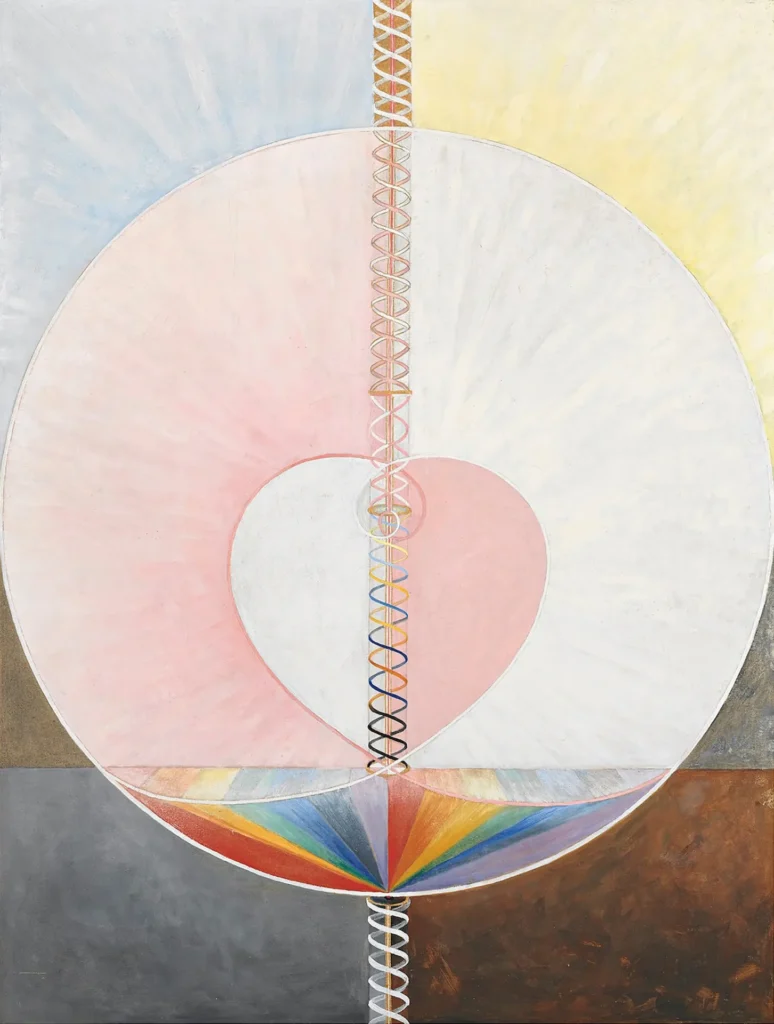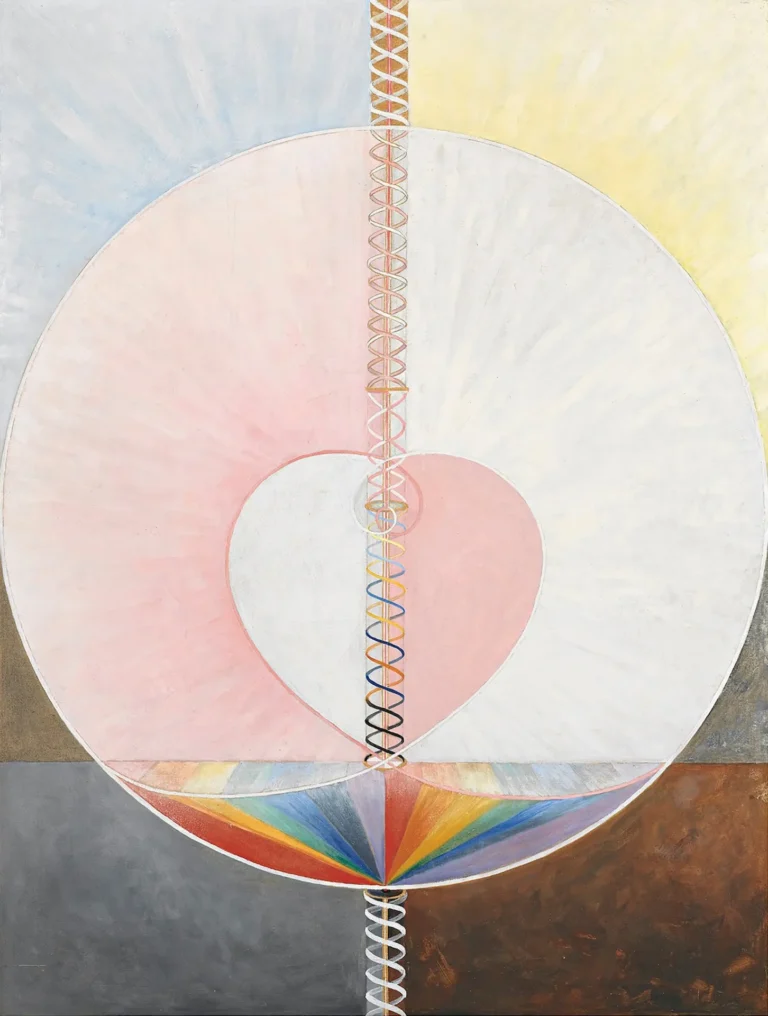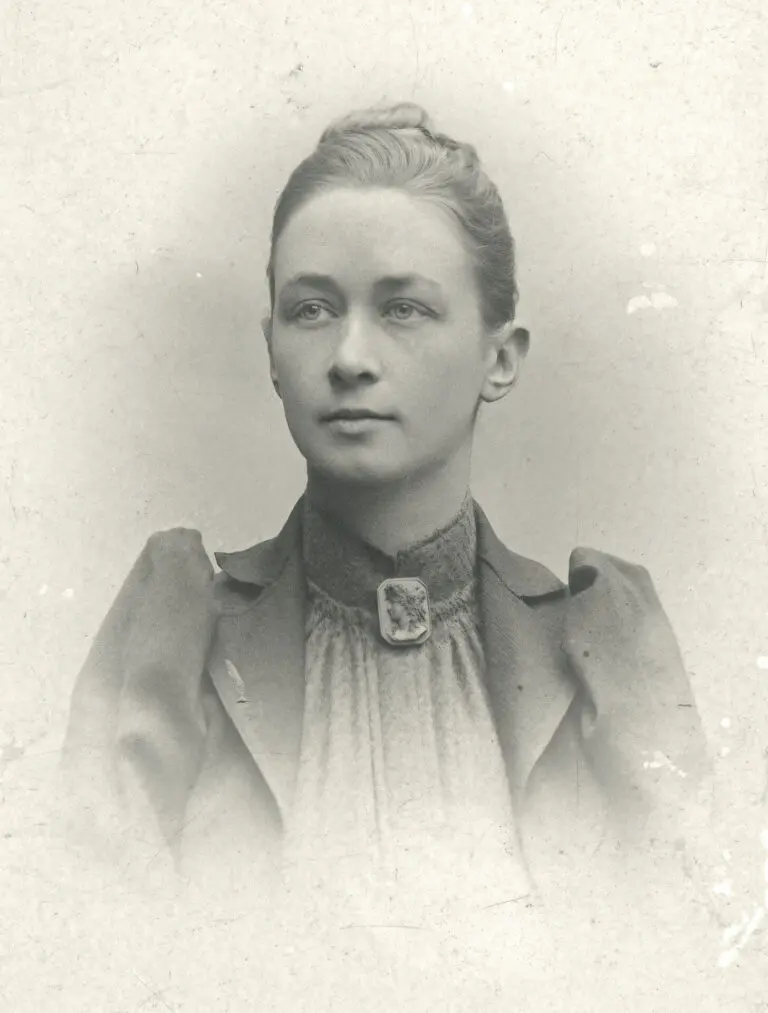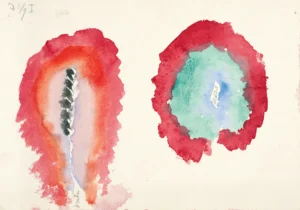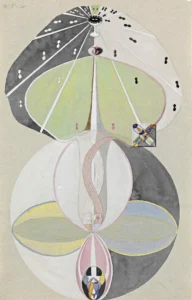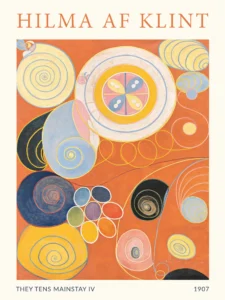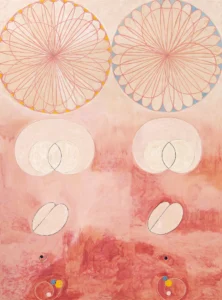Group IX,UW No. 25, The Dove, No. 1 (1915)
Hilma af Klint's 'Group IX/UW No. 25, The Dove, No. 1' is an arresting oil on canvas from 1915, celebrated for its innovative blend of Christian imagery, spirals, and contrasting colors that symbolize duality and connection to the spiritual realm. Part of the larger 'Dove' series within her extensive oeuvre, af Klint's methodical approach reflects influences from Theosophy and spiritism, prefiguring much of modern abstract art. The artwork measures 45 x 59 inches and is currently housed in a private collection, showcasing both aesthetic beauty and profound philosophical inquiries.
Year 1915
About the Artwork
Hilma af Klint, a Swedish mystic and painter, was one of the first artists to experiment with abstract painting long before it became mainstream. Her 1915 piece, 'Group IX/UW No. 25, The Dove, No. 1' stands as part of her larger 'Dove' series, which she developed from her explorations into spirituality and philosophy. This painting embodies her fascination with the light and dark dualities of existence, effectively using a spiral motif that connects the earthly to the divine. The interplay of blue and yellow hues is not merely aesthetic but symbolizes male and female energies, highlighting her quest to balance opposites. Influenced by Theosophy and visionaries like Rudolf Steiner, af Klint embraced a mystical approach, creating a bridge between the spiritual and the art world Long obscured and unrecognized, af Klint's work has only recently begun to be appreciated for its pioneering and transformative qualities.
Did You Know
Hilma af Klint is recognized as one of the first abstract artists, with her work predating that of contemporaries like Wassily Kandinsky. Her explorations into non-representational art opened doors to future movements in modern art.
Klint’s work was deeply influenced by the Theosophical Movement and her interest in spirituality, leading to a unique blend of philosophy and artistry that was virtually unheard of in her time.
Since Hilma af Klint passed away in 1944, her works have entered the public domain, allowing widespread access and appreciation of her transformative artistic contributions without copyright limitations.




